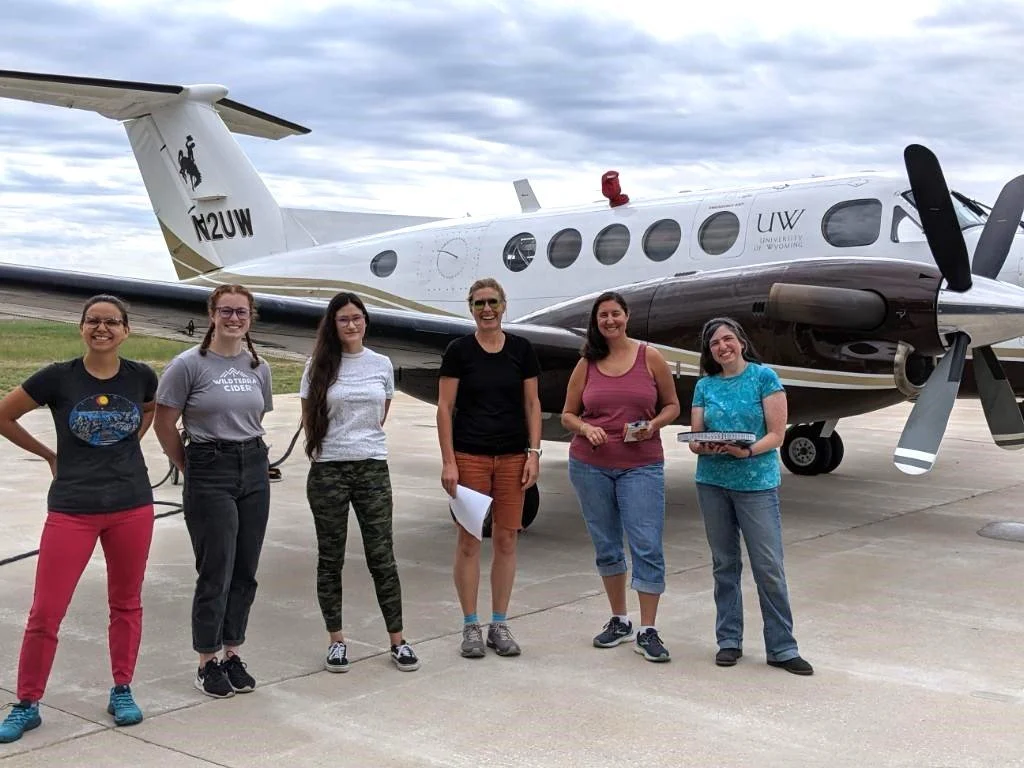Past Projects
Anna Robertson (left) and Megan McCcabe (right) in the Permian Basin in January 2020.
Permian Map
As oil and natural gas production from unconventional reservoirs has increased, more attention has been placed on the impact of these industries. These industries can vent methane, the main component of natural gas, to the atmosphere. With a global warming potential 34 times that of carbon dioxide, methane is a major contributor to climate change. In addition, oil and natural gas production can release other harmful volatile organic compounds. These sources are numerous, with several thousand wells in some of the most productive basins. They also tend to be remote making them difficult to monitor effectively. Our work focuses on finding efficient ways to sample these sites to better understand the frequency and magnitude of these emissions.
In 2020, the Environmental Defense Fund launched a campaign to monitor methane emissions in the Permian Basin in Texas and New Mexico. This is currently one of the U.S.’s largest oil and gas plays. We monitored ethane, the second largest component of natural gas, at ~100 sites. Ethane to methane ratios are useful for identifying oil and natural gas sources, especially in regions where signals become mixed. This work focused on identifying the sources of these ratios on-site.
Abandoned CBM Wells
After oil and natural gas infrastructure reaches the end of their useful life, the sites are abandoned. The requirements and conventions for remediation after abandonment at these sites vary by state and country. However, due to the financial state of the company, sometimes sites are not properly abated prior to abandonment. Even properly mitigated sites may still vent methane long after the site has been abandoned. These residual emissions from oil and natural gas are important to quantify and include in inventories.
There are few measurements of abandoned well emissions in Wyoming. In 2020 we quantified emissions from abandoned coal bed methane wells in the Powder River Basin using a dynamic flux chamber. These results will help improve estimates of abandoned well emissions in this region of the U.S.
TRANS2Am
A CAFO seen out the window of the UW King Air in Colorado, 2021.
Agriculture and livestock operations in the United States are important contributors of methane and ammonia. Ammonia is a largely unregulated gas that can react and form particulate matter and transport nitrogen to sensitive environments. Emissions are not well understood and more thorough monitoring of these sources is needed.
The NSF funded project Transport and Transformation of Ammonia (TRANS2Am), is a collaborative effort with Colorado Statue University to quantify emissions from concentrated animal feeding operations (CAFOs) in the Colorado Front Range, an area home to many large CAFOs. Using the University of Wyoming King Air, we are able to quantify methane and ammonia emissions from these CAFOs via aircraft mass balance. We completed data collection in Summer ‘21 and ‘22 and are still processing this data.
The TRANS2AM team before the 2021 deployment.
Julieta Juncosa Calahorrao, Megan McCabe, Dana Caulton, Emily Fisher, Ilana Pollack, Amy Sullivan (left to right).


